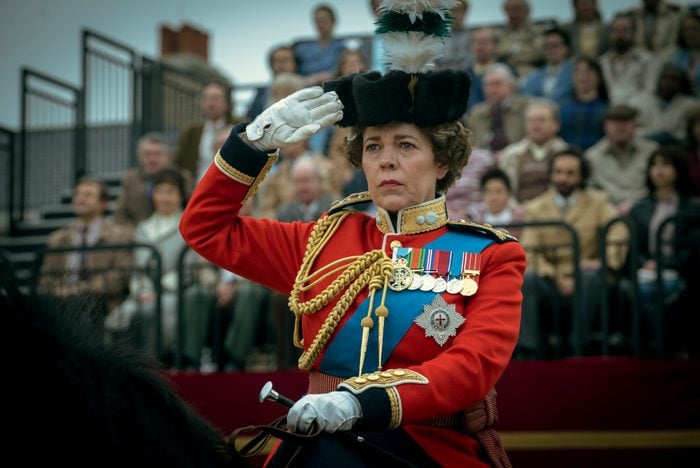
The truth behind the drama
Obsessed with The Crown? You’re certainly not alone. This historical dramatization of the reign of Her Majesty Queen Elizabeth II has been watched by 73 million households worldwide since it first aired on Netflix in 2016, according to the BBC. Its popularity has grown with each season, and a fifth season is planned, although it isn’t expected to air until 2022. As beloved as it is, however, it must be remembered that The Crown is fiction. Historical fiction, but fiction nonetheless.
Historians, including unofficial but highly regarded royal biographers Sally Bedell Smith and Hugo Vickers, have expressed concerns over the show’s not-quite-on-the-mark depiction of various events and circumstances. And while the Queen’s communications secretary told the New York Times that the royal family has no comment on The Crown and didn’t say whether they even watch it, credible reports support that the Queen watched the first season, and though she “really liked it,” she had concerns that some of it had been “too heavily dramatized.”
Even casual observers may find themselves scratching their heads over clear inaccuracies and impossibilities. For example, a tragic character from the first season, Venetia Scott, never actually existed. Read on to learn about that flight of fancy, as well as a number of other inaccuracies, including far more subtle ones that might have been apparent only to royal insiders. Before you dive in, you might want to check out these facts about Elizabeth II you probably still don’t know.
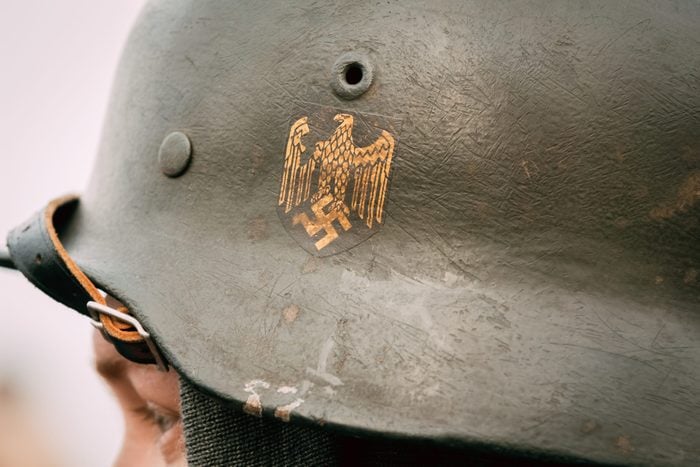
King Edward VIII was deeper in with the Nazis than the series depicted
Season 2’s sixth episode, “Verganganheit,” spends quite a bit of time addressing that the Duke of Windsor, formerly King Edward VIII, who abdicated in 1936 after less than a year on the throne, was a Nazi sympathizer. Ultimately, the episode has the Queen accusing the Duke, among other things, of having entertained discussions with the Nazis regarding a deal to get the Duke back on the throne with his wife, Wallis, by his side. Historians including Vickers don’t dispute that this conversation may have occurred or that documentation exists to suggest the veracity of such claims.
But The Crown shows the Duke attempting to minimize the significance of these missteps, which he appears to categorize as merely diplomatic in nature. In truth, it appears the Duke of Windsor’s links to the Nazi party may have been more than mere diplomatic dallying. In real life, the Duke and Duchess of Windsor appear to have been close personal friends with several Nazi officers. The Duchess may have had a romantic relationship with a high-ranking Nazi officer, and the Duke was observed giving the full Nazi salute to various party members during a 1937 trip to Germany. Biography also reports that during his lifetime, the Duke was heard saying that Hitler was “not such a bad chap” and blaming Jews for causing World War II.
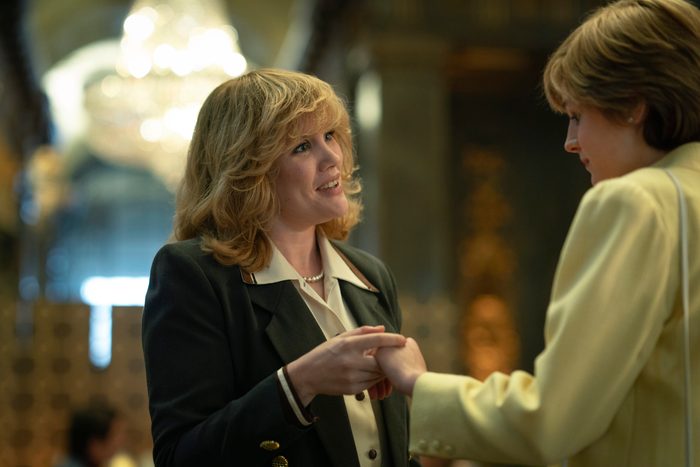
There might not have been a royal plot to break up Charles and Camilla
There is significant disagreement among historians on the topic of why Prince Charles married Lady Diana Spencer, rather than Camilla Shand. Bedell Smith theorizes the royal family hatched a full-on scheme to get Camilla to marry Andrew Parker-Bowles while Prince Charles was on an extended military assignment outside the country. By contrast, Vickers maintains that no such scheme happened or would have even been necessary since Camilla was more smitten with Andrew than with Charles, at least at that point in time.
The Crown takes Bedell Smith’s theory and runs with it, much to Vickers’ disapproval, depicting the Queen Mother and Lord Mountbatten (an uncle of Prince Charles) sending Charles overseas and manipulating the Shand and Parker-Bowles families into fast-tracking the 1973 wedding of Camilla and Andrew. At least The Crown does not go so far as to push the never-confirmed rumor that Camilla’s father planted a fake Camilla-Andrew engagement notice in the Times to force Andrew’s hand. Here are 20 things you never knew about Camilla, Duchess of Cornwall.
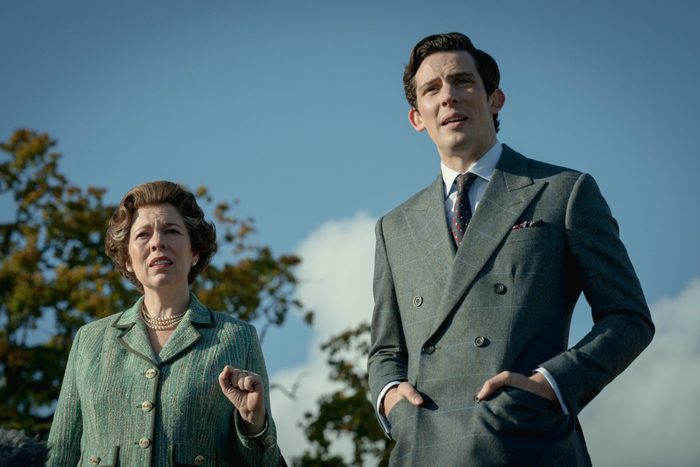
The Crown exaggerated the timeline of Charles and Camilla’s affair
From Season 4 of The Crown, it would appear that Prince Charles was cavorting with Camilla for the entirety of his marriage to Diana, which began with a fairy-tale wedding in 1981. Although Camilla married Andrew Parker-Bowles in 1973, Charles and Camilla remained friends. In 1979, they resumed their romantic relationship, according to Bedell Smith’s biography of Prince Charles, but then ceased the affair when Charles married Diana.
According to Bedell Smith’s biography, Charles and Camilla did not pick up again until 1986. Of course, none of that is to say that in real life Camilla and Charles were not continually in touch or that Camilla’s relationship with the Prince was not intrusive enough to be perceived as a threat by Diana. In fact, both are true, according to Princess Diana’s own words in her interview with Martin Bashir in 1995—a riveting moment The Crown Season 5 trailer highlights.
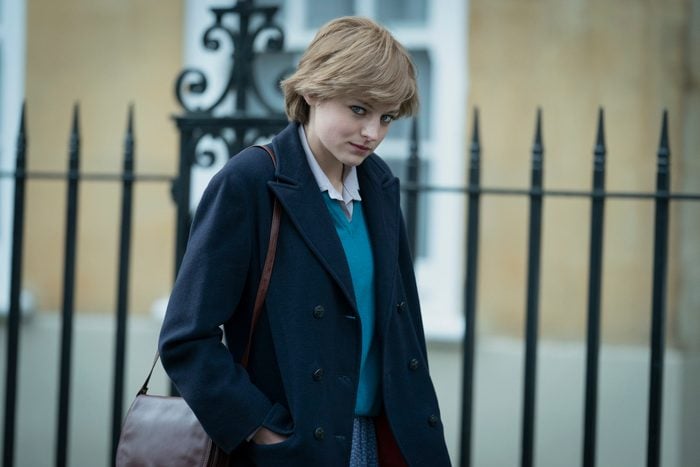
The “Balmoral Test” was a blatant exaggeration
Does the royal family actually enjoy subjecting non-royals who come for an extended visit to something called the Balmoral Test? In this alleged event, the royal family invites an unwitting non-royal to the rustic Scottish estate, Balmoral, with the intention of judging that person on their ability to fit in and observe rules of etiquette that they were unlikely to have ever encountered before. That is what The Crown suggests in a Season 4 episode by the same name.
The Telegraph reports that the only people who would call it “the Balmoral Test” are those outside the royal family, and Vickers claims that there is no such thing—period. Still, the fact remains that there is “an unspoken code of conduct” that the royal family expects their guests to follow. That being said, Vickers is adamant that the royal family would never treat anyone as rudely as they were depicted treating Prime Minister Margaret Thatcher. While Thatcher didn’t write about the “Balmoral Test” in her memoirs, she did visit the royal family on numerous occasions during the time she held office.
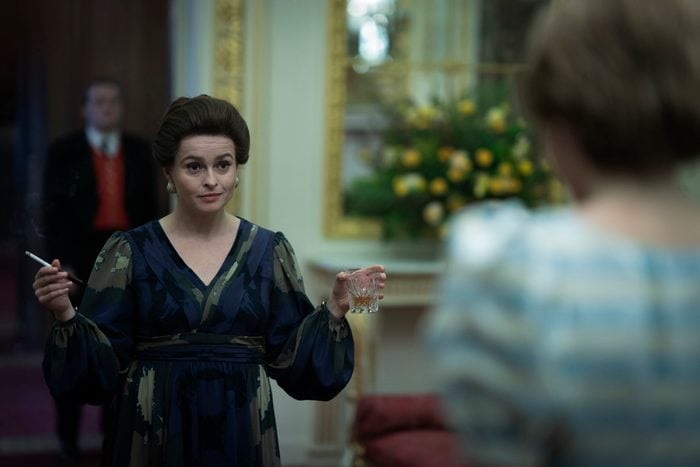
Princess Margaret’s interest in her differently abled cousins was a plot device
The episode of Season 4 called “The Hereditary Principle” was meant to bring to light a little-talked-about “shadow” on the royal family—the existence of mentally disabled cousins who were hidden away in an institution. However, Vickers roundly disputes that the events depicted in the scripted drama had any basis in reality, with the exception that two cousins were born with a developmental disorder and cared for in an institution.
Among the factual inconsistencies: Princess Margaret never visited the cousins, and the cousins were not kept a secret. The cousins’ story was told in a 1987 documentary that film critic John Crace panned for rehashing what was essentially non-news in a way that seemed intended to paint the royal family in a negative light.
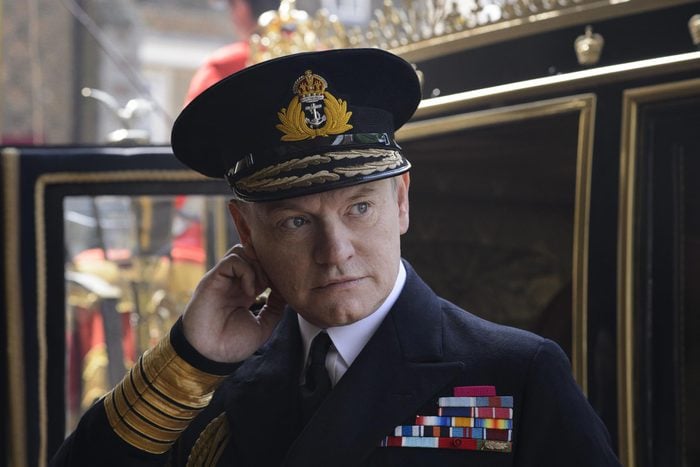
King George VI wasn’t sick yet in 1947
The Crown opens in 1947 with King George VI (Queen Elizabeth II’s father) coughing up blood. However, in real life, King George VI, who died of lung cancer in 1952, was not yet ill in 1947. It wasn’t until a year later that George VI began to suffer from leg pain. Doctors diagnosed a circulatory blockage and performed surgery for that, and his lung cancer wasn’t diagnosed until 1951. Take a look at these rarely seen photos of Queen Elizabeth II with her father.
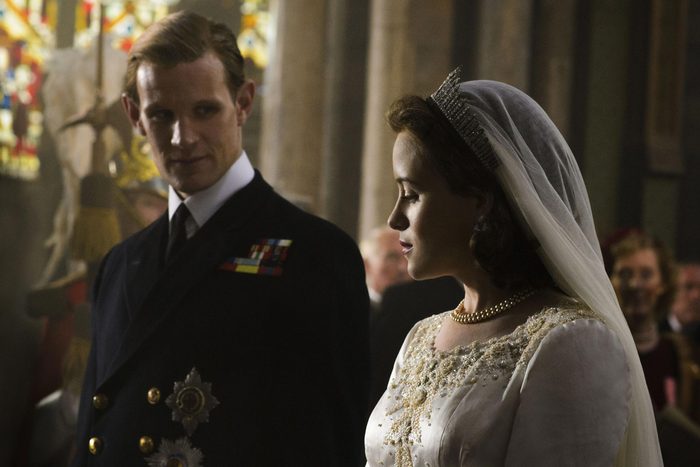
The wedding didn’t go nearly as smoothly as depicted
In the show, the wedding of Elizabeth and Philip is treated as a fairy-tale-like affair. In real life, it involved a comedy of errors:
- The diamond tiara Elizabeth wore—her “something borrowed”—snapped in half on the way to the wedding. It was quickly fixed by an on-call court jeweler, but not to perfection. In the real-life wedding photos, a gap in the tiara is clearly visible.
- Elizabeth forgot her pearl necklace and sent her secretary to retrieve it, but the traffic was so bad, the secretary had to make most of the journey on foot.
- Elizabeth’s bridal bouquet went missing (but was eventually discovered in a cooler).
Don’t miss these 20 iconic royal wedding photos throughout history.
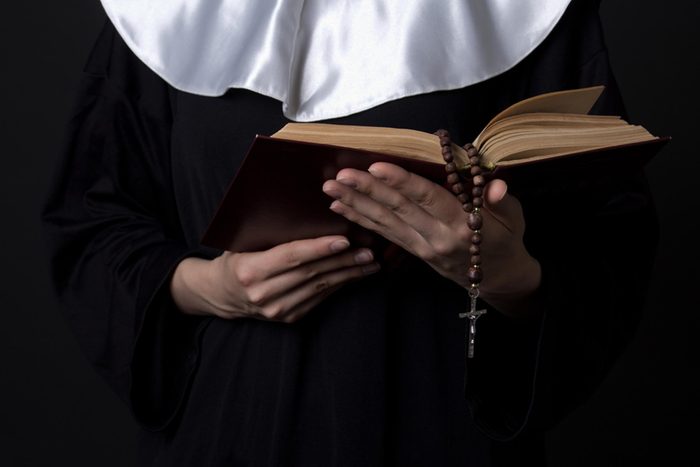
The Queen’s mother-in-law didn’t show up to the wedding dressed as a nun
The first time we see Philip’s mother, Princess Alice, in The Crown, she’s dressed as a nun, as if to illustrate her well-documented eccentricities. Eccentric as she was, however, in real life she wore a simple silk dress to her son’s wedding. That’s not to say she didn’t wear a habit to Elizabeth’s coronation several years later—in fact, she did. By then, she had actually become a nun. This is what Queen Camilla will wear at Charle’s coronation—a coronation crown. Check out these 15 little-known facts about other royal weddings.
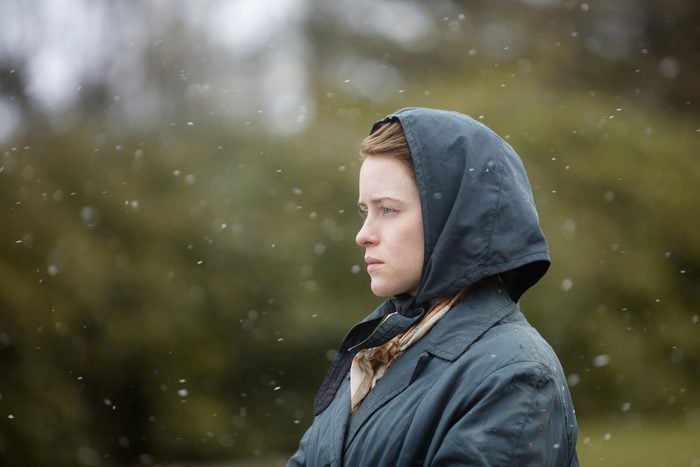
Her Majesty never had a crush on Porchie
Toward the end of Season 1, when Elizabeth and Philip’s marriage is under intense strain, The Crown depicts the relationship between Elizabeth and her childhood friend, Lord “Porchie” Porchester, as being rife with sexual tension, while Philip grows increasingly jealous. In real life, however, this never happened. From the age of 13, Elizabeth had eyes for only one man: Philip. Their fairy-tale love story is the thing of legends, and Porchie was never a threat.
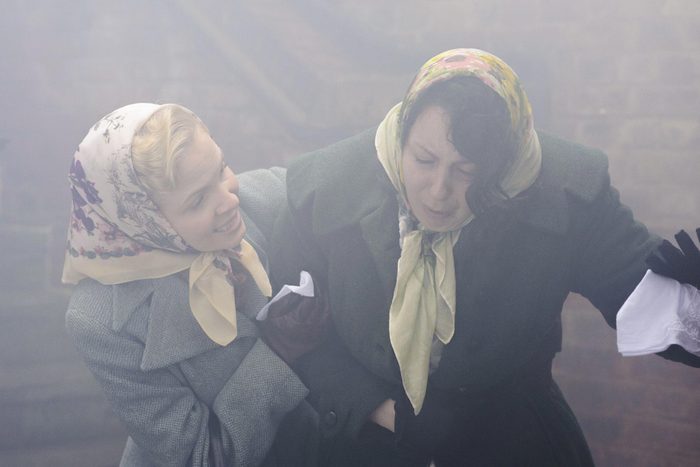
The tragic Venetia Scott didn’t actually exist
In the show, Winston Churchill’s starstruck secretary Venetia Scott is mowed down by a bus as she hurries to Downing Street with an urgent message. Her death spurs the Prime Minister to put the Clean Air Act in motion. But was that really the case back in the 1950s? Did Venetia Scott actually exist? Well, no. The earnest secretary who memorizes Churchill’s autobiography and struggles through the smog to work is actually one of The Crown‘s few invented characters. Her life and death are both fictional. The Great Smog itself was certainly a real event, though. London was enveloped in a blanket of thick, poisonous smog for several days, leading to thousands of deaths and overburdened hospitals.
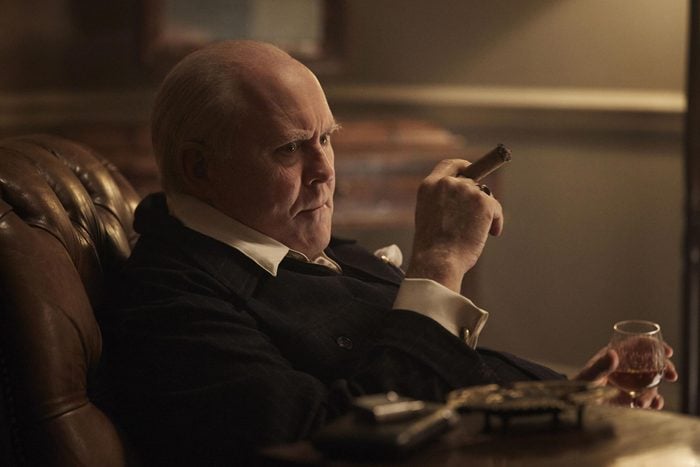
As tragic as it was, the fog wasn’t a political crisis
Yes, the “pea-souper” was less of a political crisis than The Crown makes out, so a dose of Venetia Scott adds tragedy to what was otherwise a devastating but undramatic event. This much is true: In 1952, a perfect storm of circumstances came together that caused London to be covered in a thick blanket of poisonous smog, and around 4,000 people died as a result. So when The Crown depicted the horrors of the fog, it wasn’t taking liberties. Liberties were taken, however, in the show’s depiction of the resulting political upheaval, including Her Majesty’s displeasure with Winston Churchill’s handling of it (to the point where Elizabeth was considering asking for Churchill’s resignation). In fact, there was no such upheaval. Of course, The Crown isn’t the only production guilty of doing things like this. For proof, find out the truth about these 16 historically inaccurate movies.
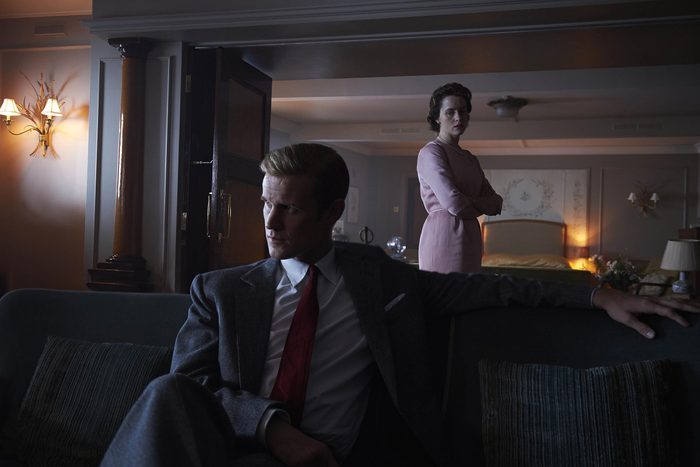
Philip’s “affair” with that ballet dancer was pure speculation
The Crown depicts Prince Philip as more than just a bit of cad. While it’s true that the real Prince Philip is known for putting his foot in his mouth on many an occasion, there’s no evidence he had an affair with a Russian ballet dancer, as The Crown suggests. In fact, Time suggests the ballet dancer in question, Galina Ulanova, may not even have been heterosexual. Here are 10 more myths about the royal family that are false.
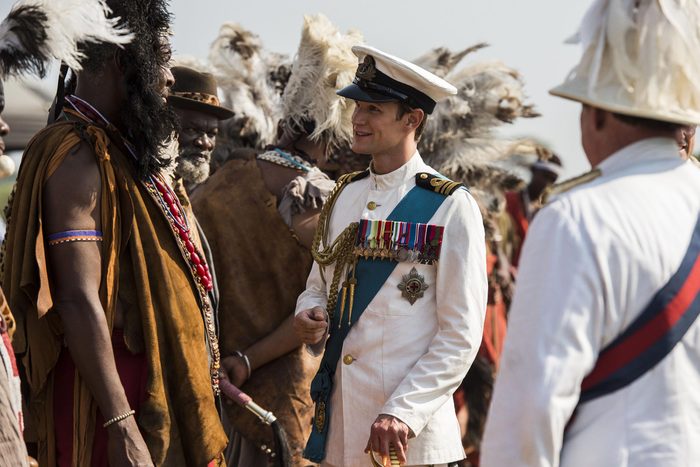
Prince Philip didn’t stare down a raging elephant
In the second episode of The Crown, just before Elizabeth learns that her father has died and that she’s now Queen, she and Philip have a terrifying encounter with a raging elephant on an African safari. The incident ends with Philip staring down the elephant and muttering something to the effect of, “Don’t mess with me, I’m going to be King.” However, that dramatic stare-down didn’t happen in real life, People reports.
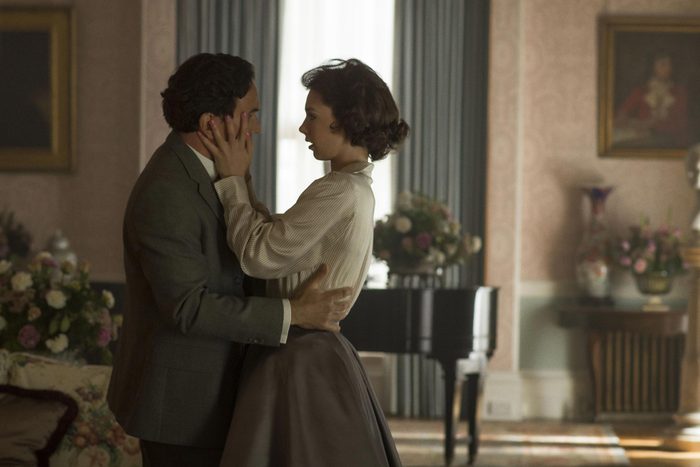
Queen Elizabeth did not refuse her sister’s request to marry
Much is made in The Crown of Queen Elizabeth II’s refusal to allow her sister, Princess Margaret, to marry Peter Townsend, including the Queen’s warning to Margaret that any such marriage would result in Margaret being shunned from the family. In real life, Elizabeth had been so keen on making sure her sister was happy that she had gone so far as to draw up papers that would permit Margaret to retain her royal title upon her marriage to Townsend, according to the BBC. So why didn’t the marriage happen? The relationship had simply run its course. Take a look at an early image of the sisters and find out what Elizabeth’s body language reveals in it.
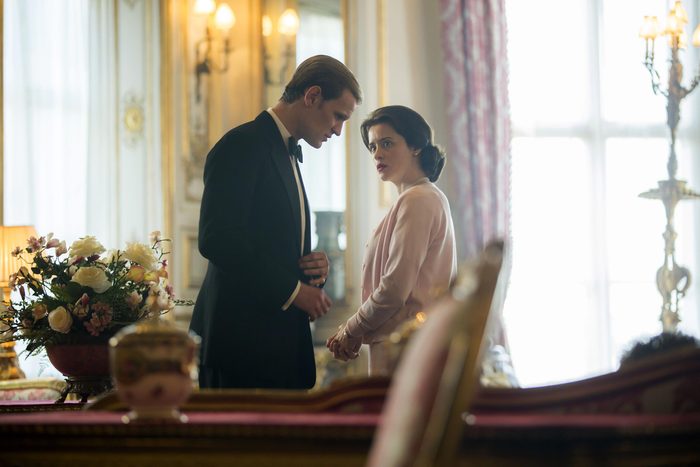
Prince Philip wasn’t blamed for the death of his sister, Cecilie
The Crown implies that Philip’s misbehavior at boarding school led his sister, Cecilie, to get on the plane that killed her and her entire family in 1937. That’s not really what happened, however, according to Vickers. First, the supposed bad behavior (a fist fight) never happened, and more importantly, Cecilie had planned on getting on that plane regardless of anything that was going on with her brother. On the other hand, here are 15 things that are actually true about Prince Philip.
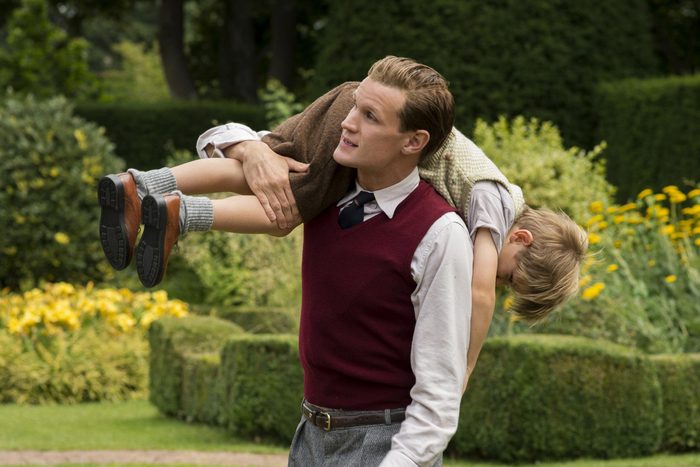
The Crown leaves out the fact that Philip had a Jewish mentor
It’s unclear why this detail was left out of The Crown, especially since there’s some suggestion in the series that Philip’s family had ties to the Nazi party. But the truth is that Philip’s mentor, Kurt Hahn, the man who founded Gordonstoun, the Scottish boarding school that Philip attended, was a German-born Jew who opposed and fled the Nazis. Also left out of The Crown is the tremendous influence Hahn had over education in general. Gordonstoun inspired the creation of many schools around the world, and Hahn cofounded Outward Bound. Don’t miss these 23 rarely seen photos of the British royal family.
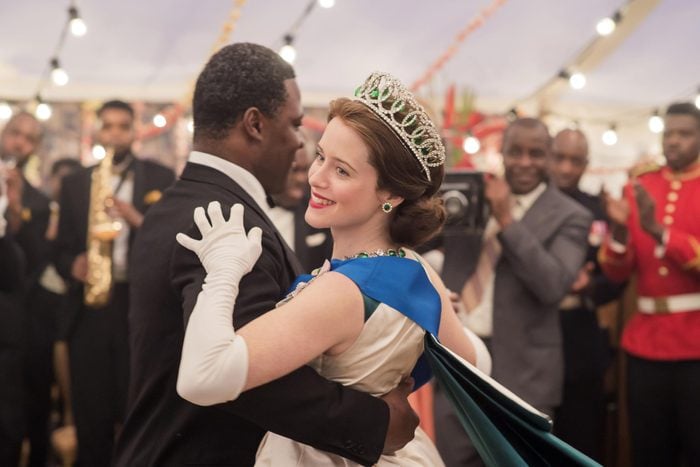
Elizabeth’s visit to Ghana wasn’t nearly as pivotal as depicted
In the early 1960s, Queen Elizabeth II paid a visit to Ghana. Newly independent, Ghana was being “courted” by the Soviet Union and therefore vulnerable to falling prey to communism. In The Crown, the Queen shares a charming ballroom dance with Ghana’s president, Kwame Nkrumah—so charming, in fact, that Nkrumah decides to rebuff Soviet overtures and remain within the orbit of the British Commonwealth. But The Crown doesn’t mention the other facts that may have influenced Ghana’s decision to remain in the Commonwealth, including the subsequent overthrow of Nkrumah’s government.
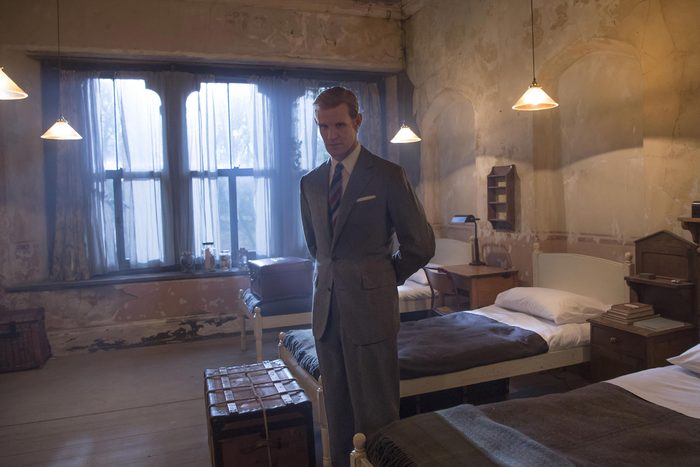
There’s no evidence Philip was part of the Profumo scandal
The Crown insinuates Philip was involved in the 1963 sex scandal involving Minister of War John Profumo and a man called Stephan Ward, who arranged for high-profile men like Profumo to “meet” women who were happy to “entertain” them. The Crown correctly points out a link between Ward and Philip, but Buckingham Palace has always denied Philip’s involvement in the scandal, and no evidence exists to tie him to it. Next, check out these 18 crazy conspiracy theories about the royal family.
Sources:
- BBC: “Netflix reveals The Crown viewing figures for the first time”
- New York Times: “Royal Watchers Wonder: Do the Royals Watch ‘The Crown’?”
- Biography: “Were Edward VIII and Wallis Simpson Nazi Sympathizers?”
- Hugo Vickers: The Crown Dissected
- Time: “The True Story Behind The Crown’s Prince Charles, Princess Diana and Camilla Parker Bowles Love Triangle”
- Town & Country: “A Timeline of Prince Charles and Camilla Parker Bowles’s Royal Romance”
- Telegraph: “From Lady Diana to The Blairs and Meghan Markle: Who passed the Balmoral Test, and who flunked it?”
- Time: “Everything to Know About the Death of King George VI, As Seen On The Crown”
- Vanity Fair: “The Most Surprisingly Relatable Mishaps of Queen Elizabeth’s Wedding Morning”
- Daily Mail: “With a £100million budget Netflix’s eagerly-anticipated new show The Crown is the most lavish biopic ever, says royal expert Hugo Vickers, but it’s marred by sensationalist errors and some remarkable lapses into vulgarity”
- Express: “The Crown: Who was Venetia Scott? Did she really die in the Great Smog?”
- Time: “How The Crown Season 2 Stacks Up Against Prince Philip’s Real-Life Story”
- People: “What Really Happened the Moment Elizabeth Discovered She Was Queen”
- BBC: “Did the Queen stop Princess Margaret marrying Peter Townsend?”
- Vogue: “Did The Crown Unnecessarily Change Prince Philip’s Tragic Backstory?”
- BBC: “Kurt Hahn: The man who taught Philip to think”
- Marie Claire: “Fact-Checking Prince Philip’s Portrayal on ‘The Crown'”
